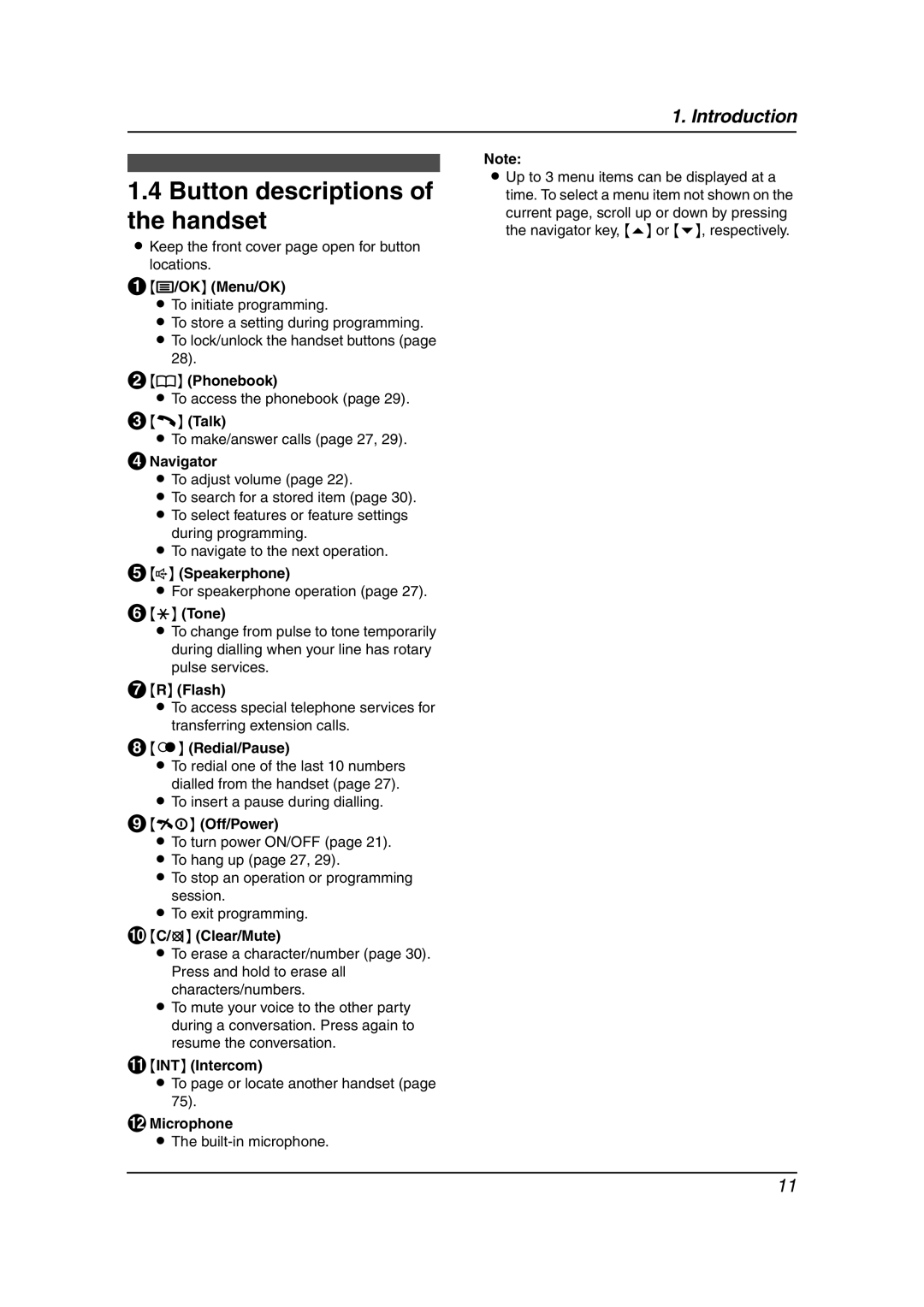
1. Introduction
1.4Button descriptions of the handset
LKeep the front cover page open for button locations.
A{j/OK} (Menu/OK)
LTo initiate programming.
LTo store a setting during programming. L To lock/unlock the handset buttons (page
28).
B{k} (Phonebook)
LTo access the phonebook (page 29).
C{C} (Talk)
LTo make/answer calls (page 27, 29).
DNavigator
LTo adjust volume (page 22).
LTo search for a stored item (page 30). L To select features or feature settings
during programming.
L To navigate to the next operation.
E{s} (Speakerphone)
LFor speakerphone operation (page 27).
F{*} (Tone)
LTo change from pulse to tone temporarily during dialling when your line has rotary pulse services.
G{R} (Flash)
LTo access special telephone services for transferring extension calls.
H{R} (Redial/Pause)
LTo redial one of the last 10 numbers
dialled from the handset (page 27).
LTo insert a pause during dialling.
I{ih} (Off/Power)
LTo turn power ON/OFF (page 21). L To hang up (page 27, 29).
L To stop an operation or programming session.
L To exit programming.
J{C/T} (Clear/Mute)
LTo erase a character/number (page 30). Press and hold to erase all characters/numbers.
LTo mute your voice to the other party during a conversation. Press again to resume the conversation.
K{INT} (Intercom)
LTo page or locate another handset (page 75).
LMicrophone
LThe
Note:
LUp to 3 menu items can be displayed at a time. To select a menu item not shown on the current page, scroll up or down by pressing the navigator key, {e} or {v}, respectively.
11
